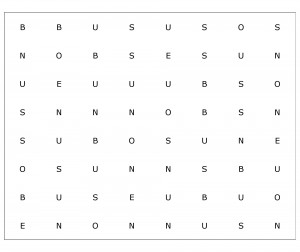Quick brain teaser to prove the limits of multitasking
 How often do you discuss office gossip via chat while participating in a Zoom meeting? Or read a great article while talking on the phone with a client? Or, wait, think about work problems while helping your child with homework?
How often do you discuss office gossip via chat while participating in a Zoom meeting? Or read a great article while talking on the phone with a client? Or, wait, think about work problems while helping your child with homework?
Yup, it is not easy to stay focused and be truly productive.
All the situations described above involve doing more than one thing at a time … and often multi-tasking compromises performance.
Attention is a scarce resource. Think about your attentional focus as the beam of a light. If the light is on an object it cannot be on other objects at the same time with the same intensity. Only dim light will be available to light up the objects in the periphery. The same happens in your attentional system. Dividing attention results in less attentional power devoted to each of the different tasks. The more tasks, the less attention can be devoted to each — plus the “transition cost” from one to another and then back. The result is often errors and waste of time. Although we typically have the feeling that multitasking saves us time, it is often not the case.
To prove this point, please try this brain teaser. The letters in three words (SUN, BUS, NONE) have been combined to make the grid of letters below.
- How many times does each of these words appear — horizontally, vertically or diagonally? SUN, BUS, NONE
- Can you compare your performance while searching for just one word vs. two of them at the same time? Or even the three of them?
How many times is the word SUN shown?
How many times is the word BUS shown?
How many times is the word NONE shown?
___
___
Answer:
Sun: 12 times
Bus: 8 times
None: 4 times
Searching for more than one word at a time probably doesn’t work too well … does it?
That proves the limits of multitasking.
___
 – Pascale Michelon, PhD, is a scientist, educator, and contributing author to The SharpBrains Guide to Brain Fitness: How to Optimize Brain Health and Performance at Any Age.
– Pascale Michelon, PhD, is a scientist, educator, and contributing author to The SharpBrains Guide to Brain Fitness: How to Optimize Brain Health and Performance at Any Age.
For more fun cognitive stimulation, try these 25 Brain Teasers for Teens and Adults and explore What are Cognitive Abilities and Skills, and How to Boost Them?
To learn more about attention and multitasking, you may enjoy reading Why you turn down the radio when you’re lost?



